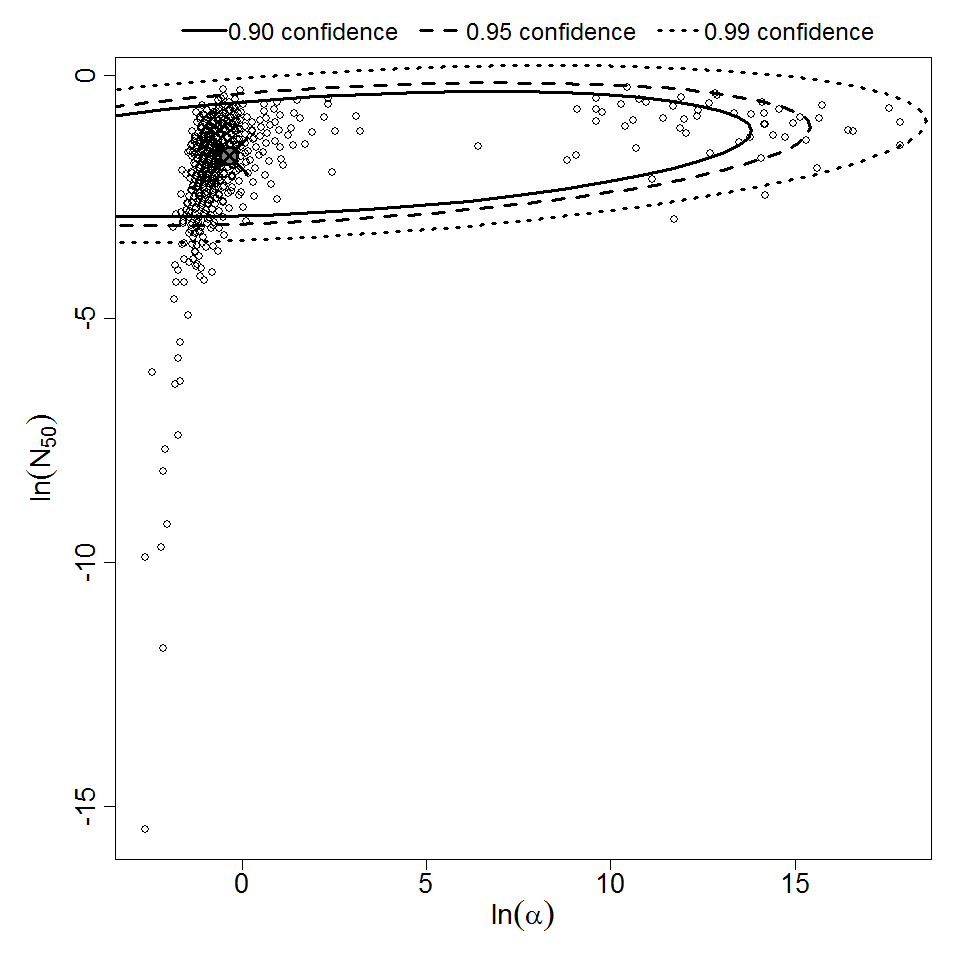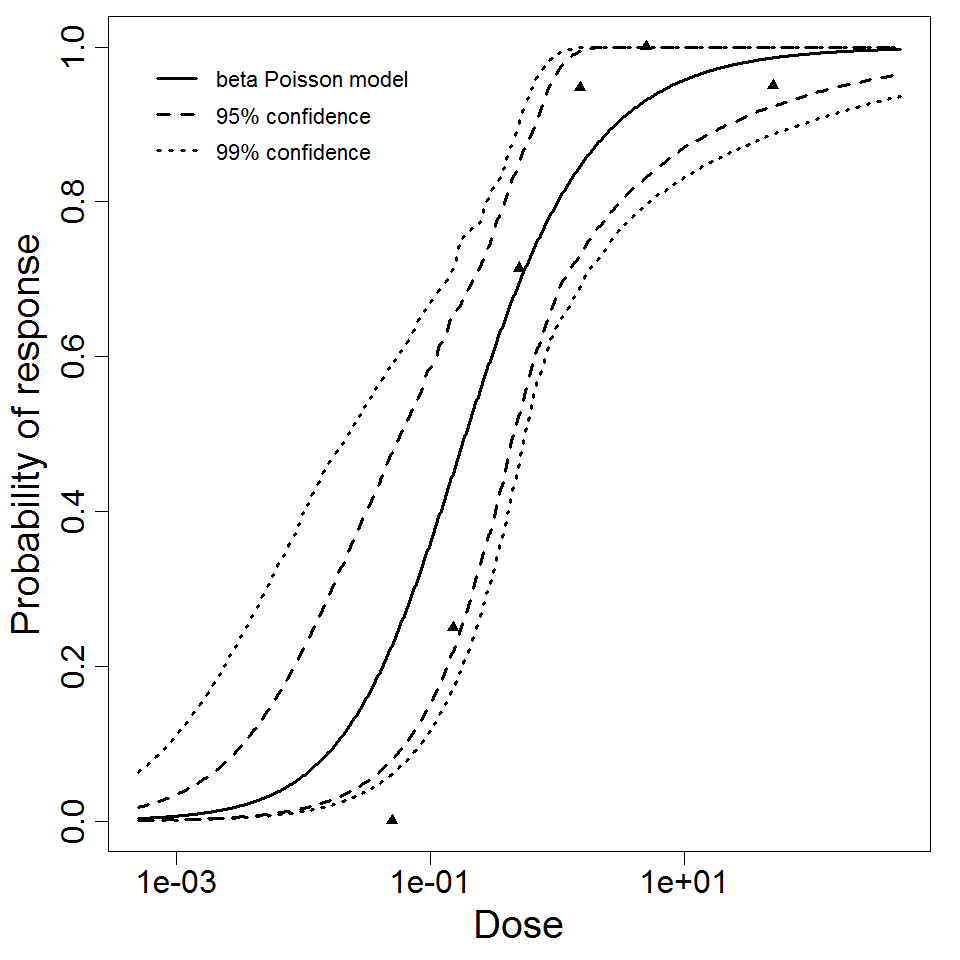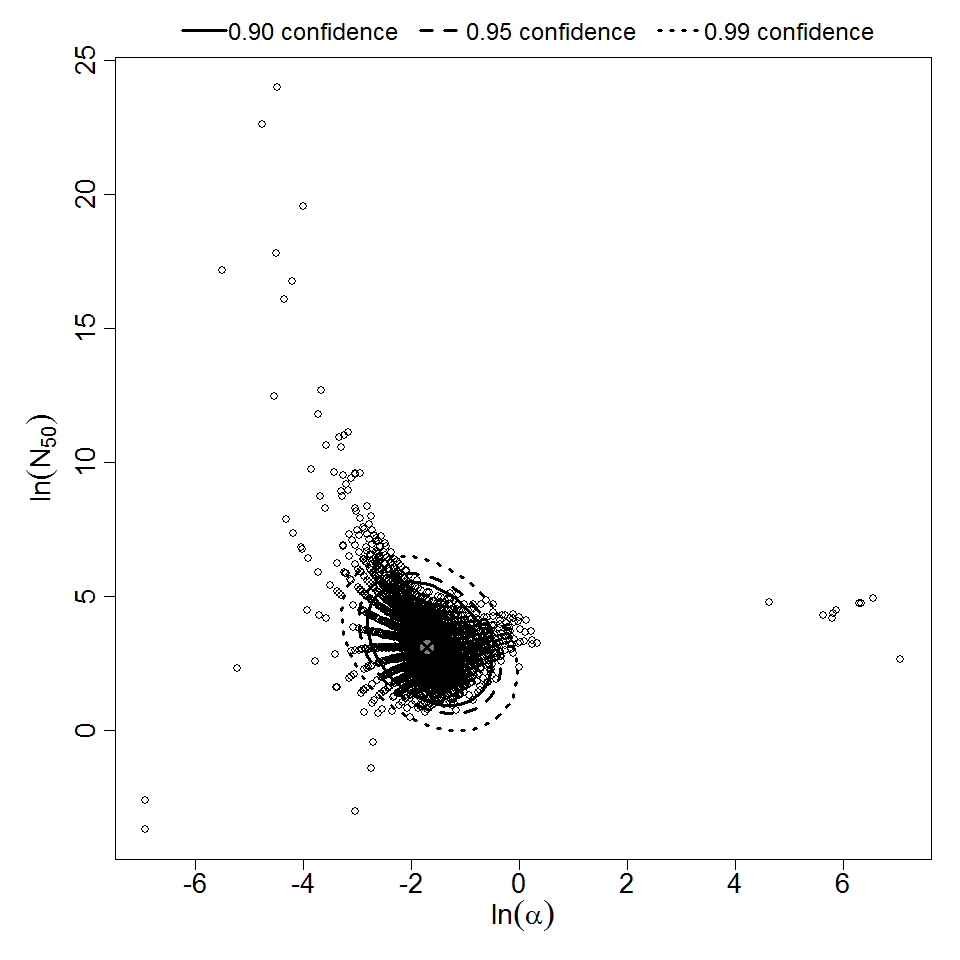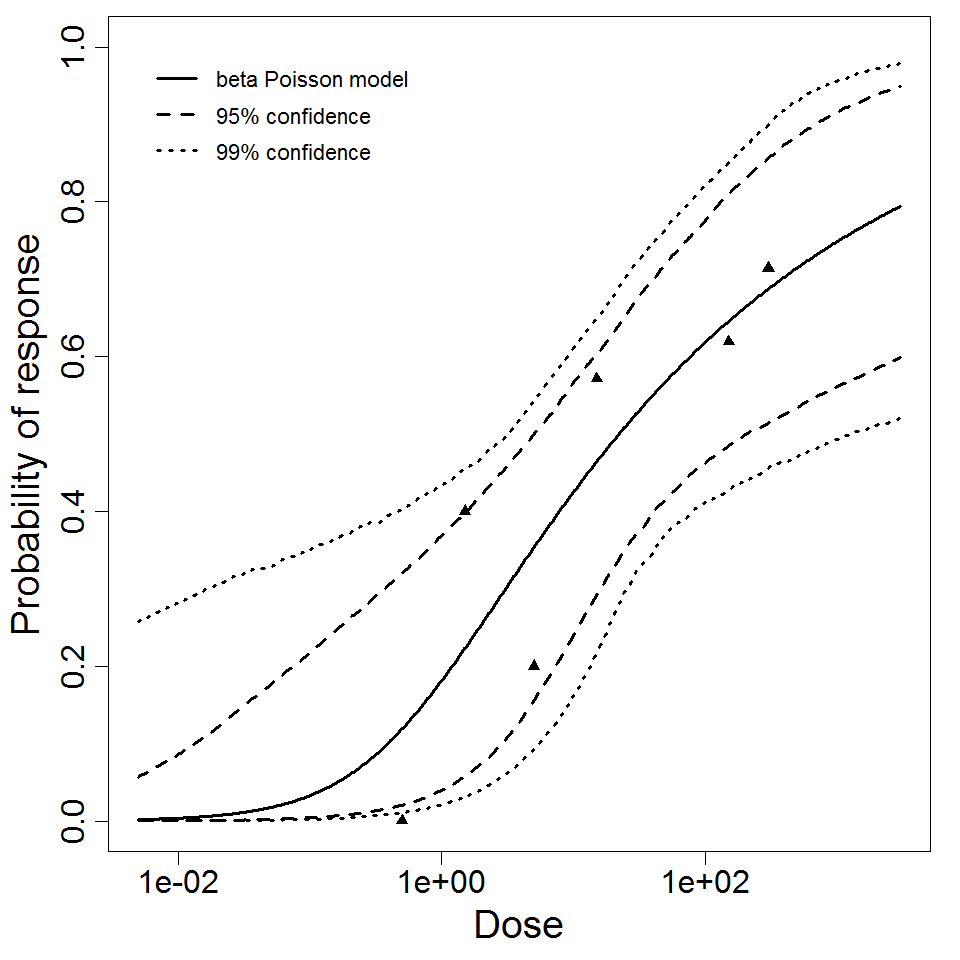General Overview
Rhinovirus, a small icosahedral viruses made of a protein capsid that encases a single-stranded, positive-sense RNA molecule, belongs to the Picornaviridae family. About 100 different serotypes have been identified and characterized by their own specific antigens.
Rhinoviruses are responsible for 30 to 50% of adult colds and 10 to 25% of colds in children. Other cold-causing viruses are adenoviruses, coronaviruses, coxsackieviruses, echoviruses, orthomyxoviruses, paramyxoviruses, respiratory syncytial virus, and enteroviruses, each of which produces infections with slightly different patterns of symptoms and severity. Several of the above-mentioned viruses also account for other more severe illnesses, according to Bella and Rossmann[1].
Summary Data
Hendley et al. (1972)[2] inoculated young adult human volunteers over the age of 21 with Rhinovirus type 39 (RV 39), strain SF 299, and rhinovirus type 14 (RV 14), strain SF 765, via intranasal exposure route. Shedding of the challenge virus and/or a fourfold or greater increase in titer of serum antibody to a homotypic rhinovirus were accepted as evidence of infection.
Summary
The responses caused by doses less than one observed in these two experiments are probably due to the uncertainties of dose counting in the original study.
References
| ID | # of Doses | Agent Strain | Dose Units | Host type | Μodel | Optimized parameters | Response type | Reference |
|---|---|---|---|---|---|---|---|---|
| 310 | 6 | type 14 | TCID50 | human | beta-Poisson |
a = 2.52E-01 LD50/ID50 = 3.83E+00 N50 = 3.83E+00 |
infection | "Relation between Naturally Acquired Immunity and Infectivity of Two Rhinoviruses in Volunteers." Journal of Infectious Diseases. 125 (1972): 3. |
| 311 | 6 | type 39 | TCID50 | human | beta-Poisson |
a = 7.01E-01 LD50/ID50 = 1.9E-01 N50 = 1.9E-01 |
infection | "Relation between Naturally Acquired Immunity and Infectivity of Two Rhinoviruses in Volunteers." Journal of Infectious Diseases. 125 (1972): 3. |
| 312 | 6 | type 14 | TCID50 | human | beta-Poisson |
a = 1.81E-01 LD50/ID50 = 2.22E+01 N50 = 2.22E+01 |
infection | "Relation between Naturally Acquired Immunity and Infectivity of Two Rhinoviruses in Volunteers." Journal of Infectious Diseases. 125 (1972): 3. |
| 312, 313 | 12 | type 14 | TCID50 | human | beta-Poisson |
a = 1.82E-01 LD50/ID50 = 1.38E+01 N50 = 1.38E+01 |
infection | "Relation between Naturally Acquired Immunity and Infectivity of Two Rhinoviruses in Volunteers." Journal of Infectious Diseases. 125 (1972): 3. |
| 313 | 6 | type 39 | TCID50 | human | beta-Poisson |
a = 2,00E-01 LD50/ID50 = 1.05E+01 N50 = 1.05E+01 |
infection | "Relation between Naturally Acquired Immunity and Infectivity of Two Rhinoviruses in Volunteers." Journal of Infectious Diseases. 125 (1972): 3. |
| 64 | 6 | type 14 | TCID50 | human | beta-Poisson |
a = 2.01E-01 LD50/ID50 = 9.22E+00 N50 = 9.22E+00 |
infection | "Relation between Naturally Acquired Immunity and Infectivity of Two Rhinoviruses in Volunteers." Journal of Infectious Diseases. 125 (1972): 3. |
| 65 | 6 | type 39 | TCID50 | human | beta-Poisson |
a = 2.21E-01 LD50/ID50 = 1.81E+00 N50 = 1.81E+00 |
infection | "Relation between Naturally Acquired Immunity and Infectivity of Two Rhinoviruses in Volunteers." Journal of Infectious Diseases. 125 (1972): 3. |
LD50/ID50 = 3.83E+00
N50 = 3.83E+00
|
|
||||||||||||||||||||||
|
||||||||||||||||||||||||||||||

Parameter scatter plot for beta Poisson model ellipses signify the 0.9, 0.95 and 0.99 confidence of the parameters.

beta Poisson model plot, with confidence bounds around optimized model
References
LD50/ID50 = 1.9E-01
N50 = 1.9E-01
Optimization Output for experiment 311
|
|
||||||||||||||||||||||
|
||||||||||||||||||||||||||||||
Parameter scatter plot for beta Poisson model ellipses signify the 0.9, 0.95 and 0.99 confidence of the parameters.
beta Poisson model plot, with confidence bounds around optimized model
References
LD50/ID50 = 2.22E+01
N50 = 2.22E+01
|
|
||||||||||||||||||||||
|
||||||||||||||||||||||||||||||
Parameter scatter plot for beta Poisson model ellipses signify the 0.9, 0.95 and 0.99 confidence of the parameters.
beta Poisson model plot, with confidence bounds around optimized model
References
LD50/ID50 = 1.38E+01
N50 = 1.38E+01
|
"
|
||||||||||||||||||||||
"
|
||||||||||||||||||||||||||||||

Parameter scatter plot for beta Poisson model ellipses signify the 0.9, 0.95 and 0.99 confidence of the parameters.

beta Poisson model plot, with confidence bounds around optimized model
References
LD50/ID50 = 1.05E+01
N50 = 1.05E+01
|
|
||||||||||||||||||||||
|
||||||||||||||||||||||||||||||

Parameter scatter plot for beta Poisson model ellipses signify the 0.9, 0.95 and 0.99 confidence of the parameters.
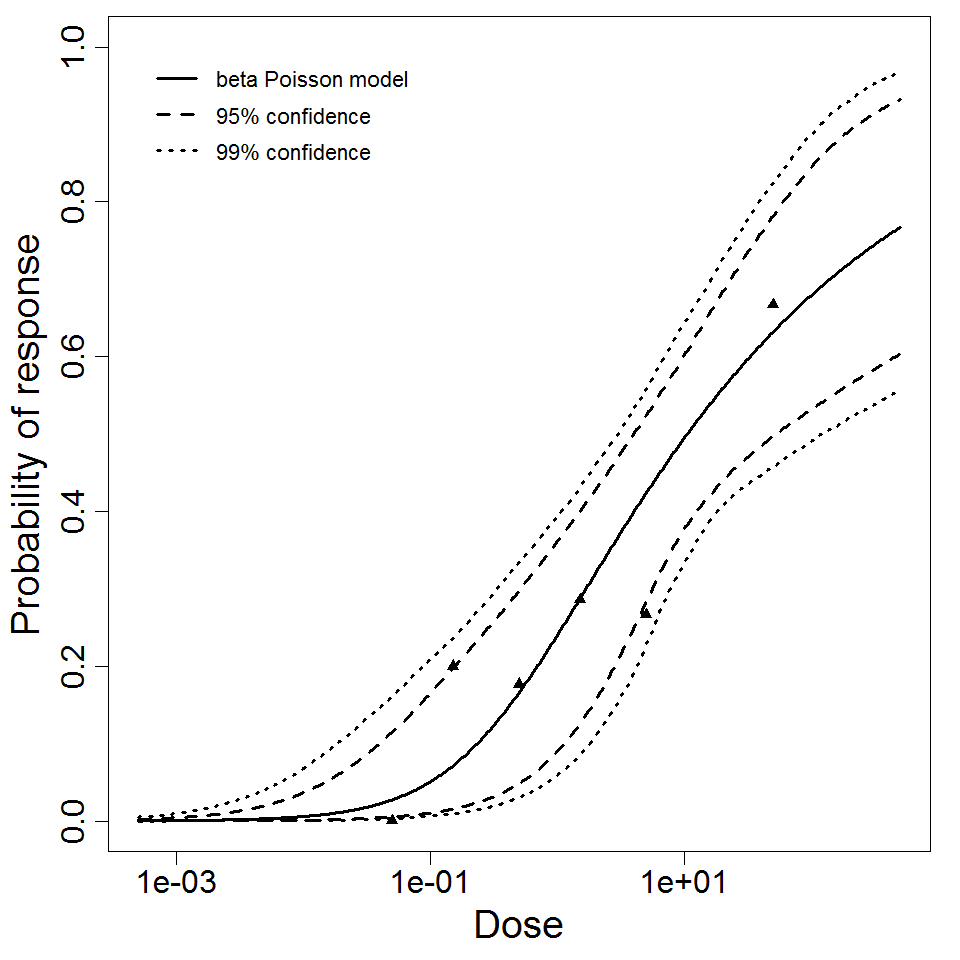
beta Poisson model plot, with confidence bounds around optimized model
References
LD50/ID50 = 9.22E+00
N50 = 9.22E+00
|
|
||||||||||||||||||||||
|
||||||||||||||||||||||||||||||

Parameter scatter plot for beta Poisson model ellipses signify the 0.9, 0.95 and 0.99 confidence of the parameters.

beta Poisson model plot, with confidence bounds around optimized model
References
LD50/ID50 = 1.81E+00
N50 = 1.81E+00
|
|
||||||||||||||||||||||
|
||||||||||||||||||||||||||||||

Parameter scatter plot for beta Poisson model ellipses signify the 0.9, 0.95 and 0.99 confidence of the parameters.

beta Poisson model plot, with confidence bounds around optimized model
 QMRA
QMRA 